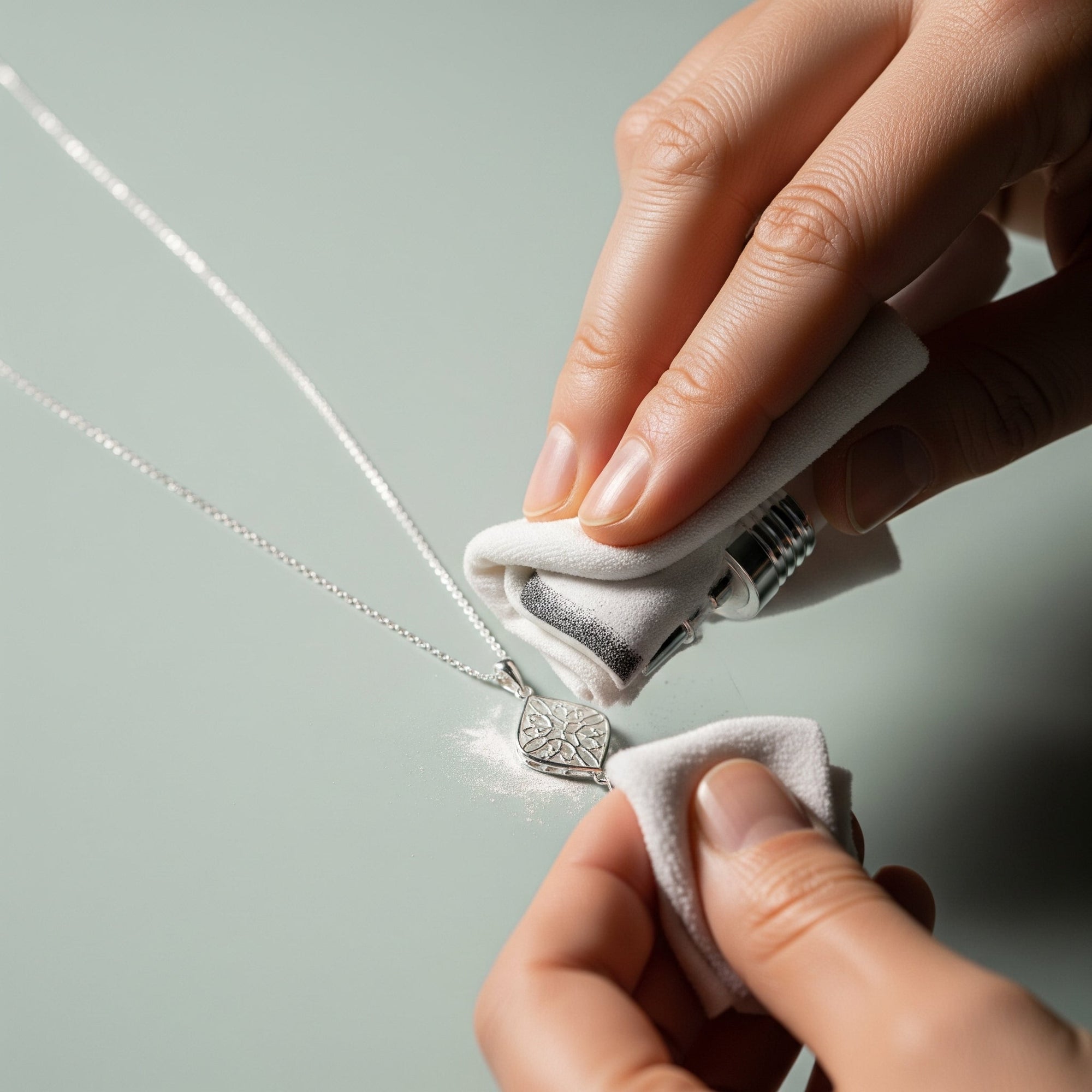Bring Back the Shine to Your Sterling Silver Jewelry: The Complete Guide
July 11, 2025 – vincent Chaisy

Have your sterling silver pieces lost their luster? Oxidation, that darkening film that dulls their shine, is a natural phenomenon. But don't worry! Whether it's a slight tarnish or more pronounced oxidation, there are effective and suitable cleaning methods. The key is to choose the right approach based on the intensity of the tarnish, the type of finish on your jewelry, and whether you want to preserve (or not) that characteristic aged look in the crevices.
1. For Light Tarnish or Regular Maintenance: Instant Sparkle
To quickly restore shine to slightly tarnished jewelry or for daily upkeep, opt for gentle methods:
-
Polishing cloth or microfiber/chamois cloth: These tools are your best allies for an instant boost of shine.
-
How to use: Polishing cloths contain a fine abrasive powder. Use them dry, never wash them. Rub the tarnished surface vigorously. For a chain, hold one end and gently slide the folded cloth up and down the chain repeatedly. A microfiber cloth or chamois cloth can be used by simply rubbing the jewelry to restore its brilliance.
-
Advantages: These methods provide instant shine in seconds. A polishing cloth works "miracles."
-
Frequency: A quick rub now and then, before wearing your jewelry, is more than enough.
-
2. For Pronounced Tarnish or Deep Cleaning: The Power of Baking Soda
Have your jewelry pieces been unworn for a long time, and the oxidation is well established? Baking soda is the ideal solution for a deep clean:
-
Baking soda:
-
How to use: Mix 3 parts baking soda with 1 part water to form a paste. Apply this paste to the jewelry with a cloth, washcloth, or even your fingers, rubbing with light pressure. Then rinse with warm water and dry with a clean cloth. For small crevices, a toothbrush can be very useful. For a chain, hold it by one end and, with your other hand, pinch a cloth filled with baking soda, then gently slide it down the chain several times.
-
Advantages: This method is highly recommended because it is economical, ecological, very effective, non-abrasive, non-corrosive, non-toxic, and safe for stones or pearls. It's an excellent option for removing oxidation, even on jewelry that hasn't been worn in years.
-
Frequency: A few times a year should suffice, depending on the level of oxidation and your preference. There's no risk in doing it too often or not often enough.
-
Combination: For best results, cleaning with baking soda can be complemented by polishing with a polishing cloth.
-
3. For Jewelry with Specific Finishes (Satin or Dark Brushed):
Certain finishes, such as satin or dark brushed, require a specific approach to remove unwanted oxidation while preserving their unique appearance.
-
A small green pad (piece of scouring pad):
-
How to use: Use this pad to remove unwanted oxidation on jewelry with a satin or dark brushed finish. Rinse the jewelry with warm water afterward if necessary.
-
Combination: This cleaning can be combined with baking soda cleaning for a flawless result.
-
4. If You Want to Preserve Oxidation in Crevices (for an Artisan Style):
Oxidation in crevices can give your jewelry a unique and artisanal character. If you wish to maintain this effect, caution is advised.
-
Avoid special silver dipping products: While they instantly remove oxidation, these products can remove it even in crevices. Furthermore, they are slightly corrosive and can damage silver in the long term or if the dipping is too prolonged.
-
Opt for mechanical methods: Choose baking soda or a polishing cloth. These methods allow for more precise control and are less likely to affect areas where oxidation is desired.
5. For Hard-to-Clean White, Non-Oxidized Jewelry (e.g., Chains):
If your jewelry is white and non-oxidized but difficult to clean, certain options can be considered.
-
Special dipping products may be an option, but baking soda is always the first option to try due to its gentleness and effectiveness.
In Summary: Choosing the Right Method for Your Jewelry
The choice of method depends on the current condition of your jewelry, the desired result, and your preference for cleaning techniques:
-
For daily maintenance or quick shine: A polishing cloth or microfiber cloth.
-
For deep cleaning and stone safety: Baking soda. This is the most versatile and recommended method first.
-
For specific finishes (satin/brushed): The small green pad.
-
To avoid removing oxidation from crevices: Avoid dipping products and favor mechanical methods.
welry is rhodium-plated to prevenBy following these tips, your sterling silver jewelry will regain its former luster and accompany you for many years to come!

